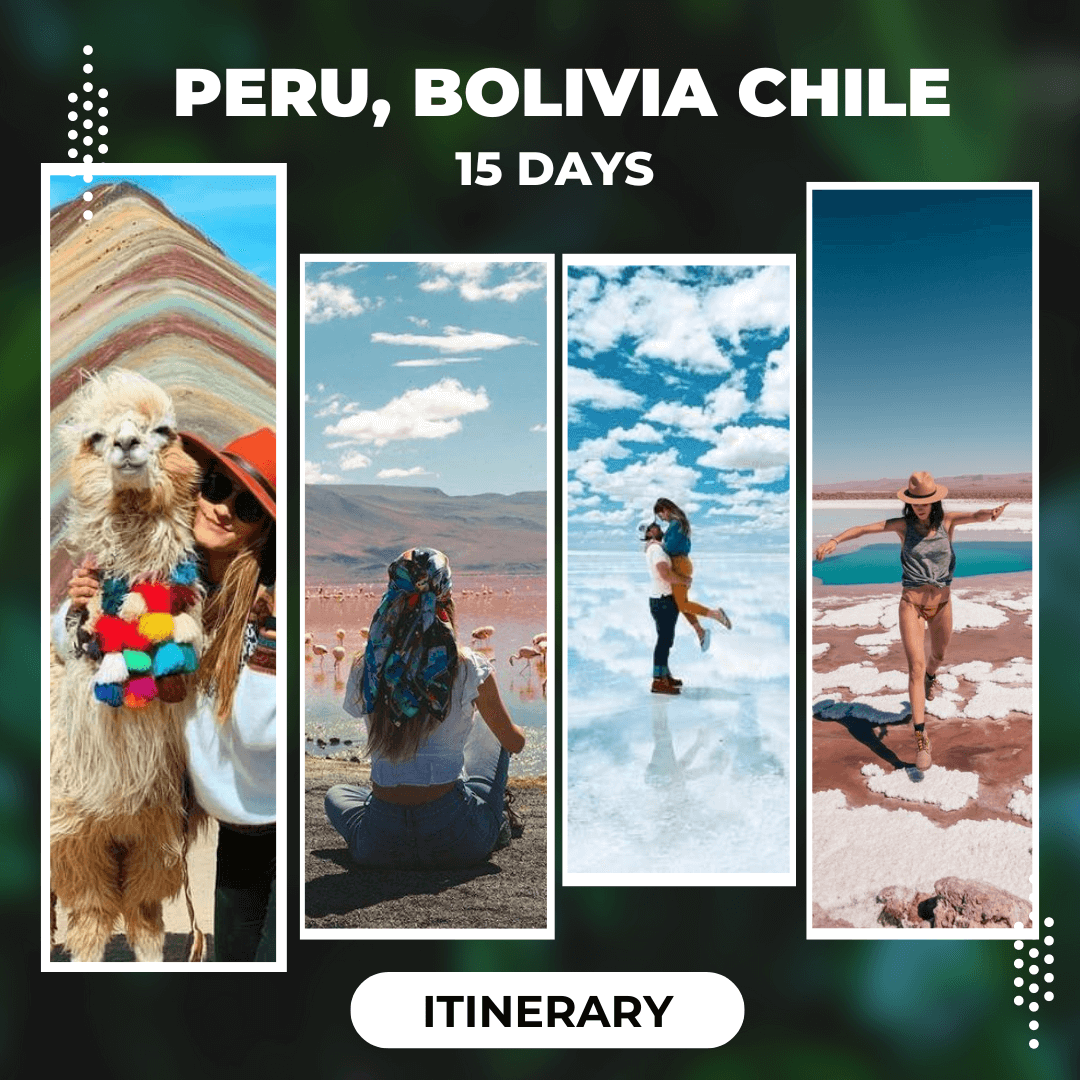
What are the Requirements for the Salkantay Trek? Find Out If You Need Previous Experience
Before embarking on the adventure towards the imposing Salkantay Trek, it is crucial to know the requirements for the Salkantay Trek. This challenging path will take you through spectacular landscapes of Peruvian mountains and jungles, ending near the world wonder of Machu Picchu. But what is really needed to undertake this journey? Is it essential to have previous experience in high mountain hiking, or is a good physical condition and an adventurous attitude enough? Join us to find out.
Is Previous Hiking Experience Required to Complete the Salkantay Trek?

The Salkantay Trek 4 Days is a popular adventure among hiking enthusiasts who want to explore the Andean landscapes and reach Machu Picchu, one of Peru’s most iconic sites. This route is known for its natural beauty, diversity of ecosystems, and, of course, the physical challenge it represents. But is previous hiking experience necessary to embark on this adventure?
Recommended Experience
Although the requirements for the Salkantay Trek do not explicitly include previous hiking experience, it is highly recommended to have it. The route traverses varied terrain, from rocky paths to dirt trails, and reaches altitudes that exceed 4,600 meters above sea level at the highest point, the Salkantay Pass. These characteristics make the trek moderately challenging.
For beginners in hiking, facing abrupt changes in altitude and long days of walking (between 6 to 8 hours daily for 4 or 5 days) could be overwhelming without adequate preparation. In this context, having some previous experience on routes of similar physical demand and duration can be a key factor in completing the trek safely and enjoyably.
Physical Preparation: A Key Requirement
More important than hiking experience per se is physical preparation. The requirements for the Salkantay Trek emphasize the need to be in good physical shape. This means having the ability to handle multiple hours of daily walking under potentially difficult conditions such as extreme cold, rain, or strong sun. Practicing hiking at high altitudes, if possible, or performing workouts that improve cardiovascular endurance will be vital preparations before facing the trek.
Altitude Adaptation
One of the most significant challenges of the Salkantay Trek is altitude. Although technical mountaineering experience is not required, familiarizing yourself with the effects of altitude and knowing how to mitigate altitude sickness are crucial aspects for all hikers. This includes acclimatizing beforehand in the city of Cusco or in nearby areas at high altitudes, as well as understanding and being prepared for altitude sickness symptoms.
What level of physical condition do I need for the Salkantay Trek?

If you’re planning to do the Salkantay Trek 5 Days, one of the most impressive routes leading to Machu Picchu, it’s essential to assess your current physical condition. This trek is not just a walk in the park: it traverses mountainous landscapes, variable climates, and reaches high altitudes. Therefore, proper physical preparation is one of the requirements for the Salkantay Trek.
Required Level of Physical Condition
The Salkantay Trek is considered moderate to challenging in difficulty. You don’t need to be an elite athlete, but you do need to be in good physical shape. Here are some key points about the level of physical condition you’ll need:
Cardiovascular Endurance: You should be able to handle between 6 to 8 hours of walking per day for 4 to 5 consecutive days. Cardiovascular workouts like running, swimming, or cycling are excellent for preparing.
Muscular Strength: Constant uphill and downhill sections require good strength in legs, glutes, and core. Incorporating exercises like squats, lunges, and planks will help strengthen these muscles.
Altitude Capacity: At altitudes exceeding 4,600 meters, your body must be able to adapt to less oxygen. Hiking at lower altitudes and gradually increasing altitude can facilitate acclimatization.
Essential Preparation
Preparing yourself physically is crucial and is part of the requirements for the Salkantay Trek. Here are some tips to ensure you’re ready for this adventure:
Pre-Trek Training: Start training at least three months before the start date. Training should include cardio, strength, and high-intensity exercises.
Practice Hikes: Do long hikes once or twice a week, preferably on varied terrain and with a backpack of similar weight to what you’ll carry on the trek.
Medical Consultation: Before committing to the trek, it’s a good idea to get a complete physical evaluation. A doctor can provide you with a good perspective on your ability to handle this demanding physical activity.
What are the essential equipment for the Salkantay Trek?

Preparing for the Salkantay Trek involves more than just having good physical condition and hiking experience. One of the most important requirements for the Salkantay Trek is to carry the right equipment. Here we explain what you can’t miss in your backpack to ensure your experience is safe and enjoyable.
Basic Equipment
To face the various climates and terrains you’ll encounter on the Salkantay Trek, you’ll need to equip yourself properly. Below are the essential items:
Trekking Backpack: A backpack of at least 40 liters with back support, abdominal belt, and rain cover.
Appropriate Clothing: Include thermal layers for low temperatures, especially during nights near snowy peaks, and lightweight clothing for warmer stages. Don’t forget a rain poncho, which is vital given the changing weather.
Mountain Footwear: Waterproof trekking boots with good non-slip soles are essential. Make sure to wear them beforehand to avoid blisters.
Sleeping Bag: Consider a sleeping bag suitable for sub-zero temperatures, as nights can be extremely cold.
Other Important Accessories
In addition to basic equipment, there are other accessories that can make a big difference in your comfort and safety during the trek:
Trekking Poles: Highly recommended for assistance in difficult climbs and to reduce impact on knees during descents.
Headlamp: Essential for nights and for any emergency situation that requires lighting.
Water Bottle and Purification System: Stay hydrated constantly. Bringing water purification tablets or a portable filter is a good idea to make use of natural water sources.
First Aid Kit: Include basics in medications, such as pain relievers, anti-inflammatories, adhesive bandages, and altitude sickness medications.
Are there age or health restrictions to participate in the Salkantay Trek?

The Salkantay Trek 6 Days, known for its scenic route to Machu Picchu, is an adventure that attracts people of all ages and backgrounds. However, as one of the requirements for the Salkantay Trek, it is crucial to understand that there are certain age and health restrictions that can affect an individual’s ability to complete this journey safely and enjoyably.
Age Restrictions
Regarding age, there are no strict limits officially established to participate in the Salkantay Trek, but it is generally recommended that participants be over 12 years old due to the physical demands of the trek. Children under this age may find the trek particularly challenging, not only physically but also emotionally. For older adults, although there is no upper age limit, it is essential to be in good physical condition and consult with a doctor before undertaking the trek, especially if there are pre-existing medical conditions.
Health Considerations
The requirements for the Salkantay Trek also include specific health considerations. The route reaches altitudes of over 4,600 meters (15,000 feet), so the risk of altitude sickness is significant. Here are the most important health considerations:
Altitude Sickness: Known medically as acute mountain sickness, it can affect anyone, regardless of age or physical condition. Symptoms include headache, nausea, and extreme fatigue. It is crucial to acclimatize to altitude before starting the trek.
Physical Condition: Given the length and difficulty of the trek, participants should have good cardiovascular and muscular health. Those suffering from severe heart, respiratory, or musculoskeletal problems should avoid this type of strenuous physical activity.
Preparation: Participants should consider prior training that includes cardiovascular and muscle strengthening exercises, especially if they are not accustomed to regular physical activity.
What permits and documents are necessary for the Salkantay Trek?

When planning your adventure to Machu Picchu via the Salkantay Trek, it is essential to understand the requirements for the Salkantay Trek related to permits and necessary documents. Unlike the Inca Trail, the Salkantay Trek has the advantage of requiring fewer bureaucratic procedures, but still, there are certain documents that you cannot forget.
Essential Documents
To ensure a seamless experience, here are the documents you will need:
Valid Passport: You must carry a valid passport with you. This will be necessary not only to enter Peru but also to verify your identity at various checkpoints along the trek and when entering Machu Picchu.
Machu Picchu Permit: Although the Salkantay Trek itself does not require a special permit like the Inca Trail, you need to have an entry ticket to Machu Picchu. It is crucial to purchase this ticket in advance, especially during high season, as the number of visitors per day is limited.
Additional Recommendations
Although these are the basic documents, there are other recommendations that will help you avoid inconveniences:
Travel Insurance: It is not a mandatory document, but having travel insurance that covers accidents, medical evacuation, and theft or loss of belongings can be invaluable. Make sure your policy is suitable for high mountain activities.
Copies of Important Documents: Carry copies of your passport, entry tickets, medical insurance, and any other relevant documentation. Keep these copies separate from the originals for added security.
How do weather conditions affect the requirements for the Salkantay Trek?

The Salkantay Trek, known for its breathtaking views and varied ecosystems, presents unique challenges that are directly influenced by weather conditions. Understanding how the weather affects the requirements for the Salkantay Trek is essential for preparing adequately and ensuring a safe and enjoyable experience.
Impact of Weather on Trek Preparation
Weather conditions on the Salkantay Trek can vary drastically, from sunny and dry to extremely cold and rainy, depending on the season. Here’s how these conditions dictate specific requirements:
Rainy Season (November to April)
During these months, rains are frequent and can make trails slippery and more difficult to navigate. This requires:
Waterproof Clothing: A good rain poncho and waterproof covers for the backpack are essential.
Appropriate Footwear: Trekking boots with ankle support and non-slip soles are crucial to prevent falls.
Cold Protection: Temperatures can drop significantly, especially at higher altitudes near the Salkantay Pass.
Dry Season (May to October)
This is the most popular season for the trek due to more stable and dry conditions, but it can also have very hot days followed by cold nights. Requirements for the Salkantay Trek include:
Clothing Layers: Clothing that can easily adjust to temperature changes, such as lightweight layers and a thermal jacket.
Sun Protection: Hat, sunglasses, and sunscreen are indispensable due to increased sun exposure.
Additional Considerations
In addition to appropriate clothing and equipment, other requirements for the Salkantay Trek influenced by the weather include:
Adequate Hydration: The cold and dry climate at high altitudes may not make you feel thirsty, but it is crucial to stay hydrated. Carrying reusable water bottles and water purification systems is advisable.
Physical Preparation: Regardless of the season, physical preparation should be adapted to handle both long ascents and changing weather conditions.
Ready to embark on the adventure of a lifetime? At Machupicchu Travel Tour, we are experts in designing tailor-made tour packages that will transform the way you travel. Our local knowledge and attention to detail guarantee that your Sacred Valley trekking experience will be unforgettable. We are not only your best choice, we are your ultimate travel partner.
Don’t wait any longer! Follow us on Instagram to see our clients’ exciting adventures and join our community on Facebook for the latest news and special offers. Live the adventure, live Leading Travel.
With Machupicchu Travel Tour, every step you take to new heights is filled with the promise of wonder, learning and, of course, fun. Let us make your next great trip a reality!

